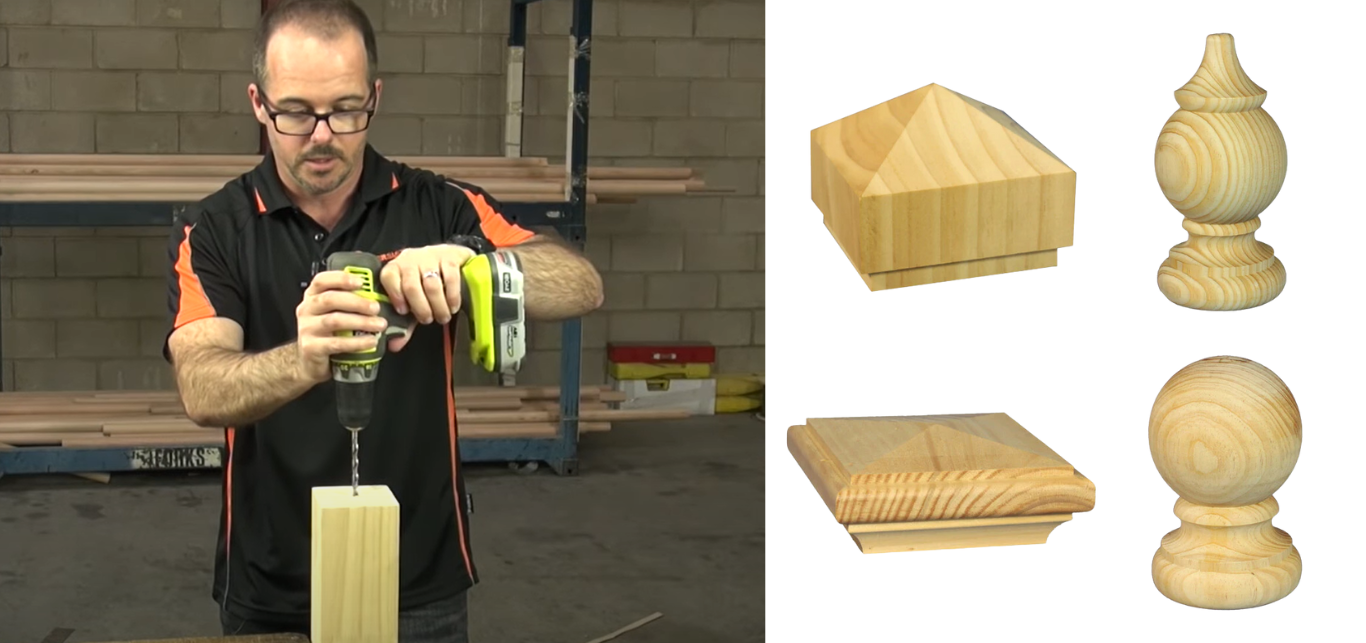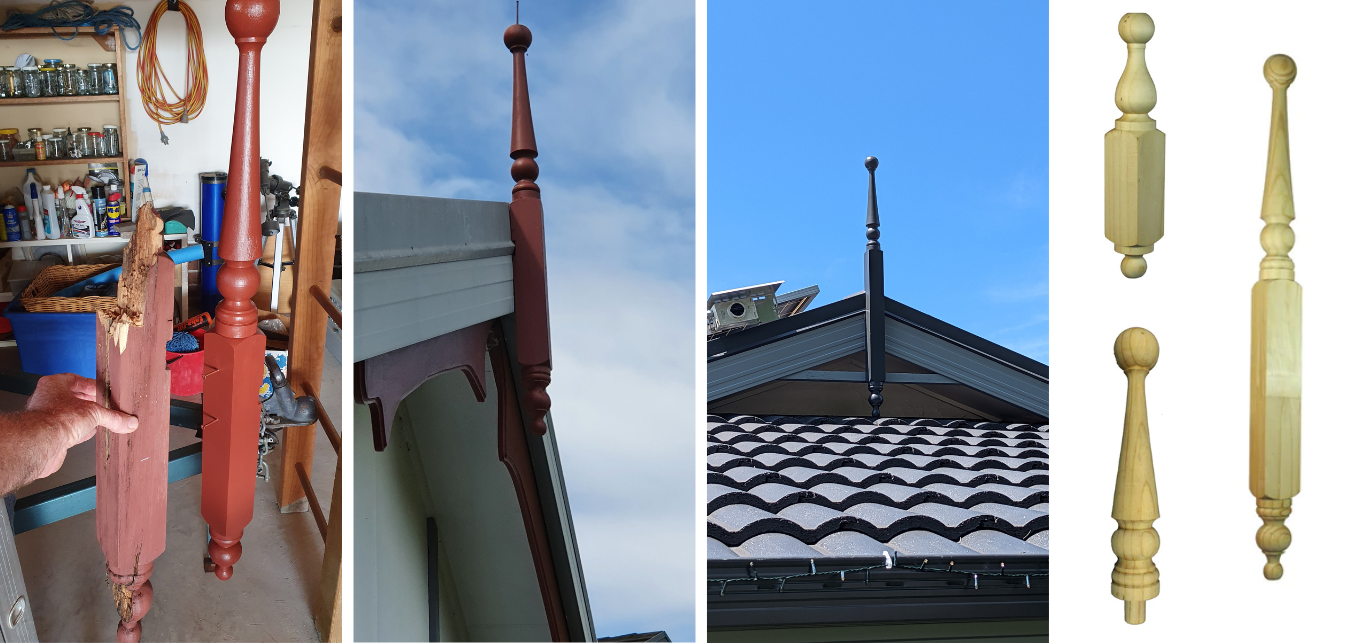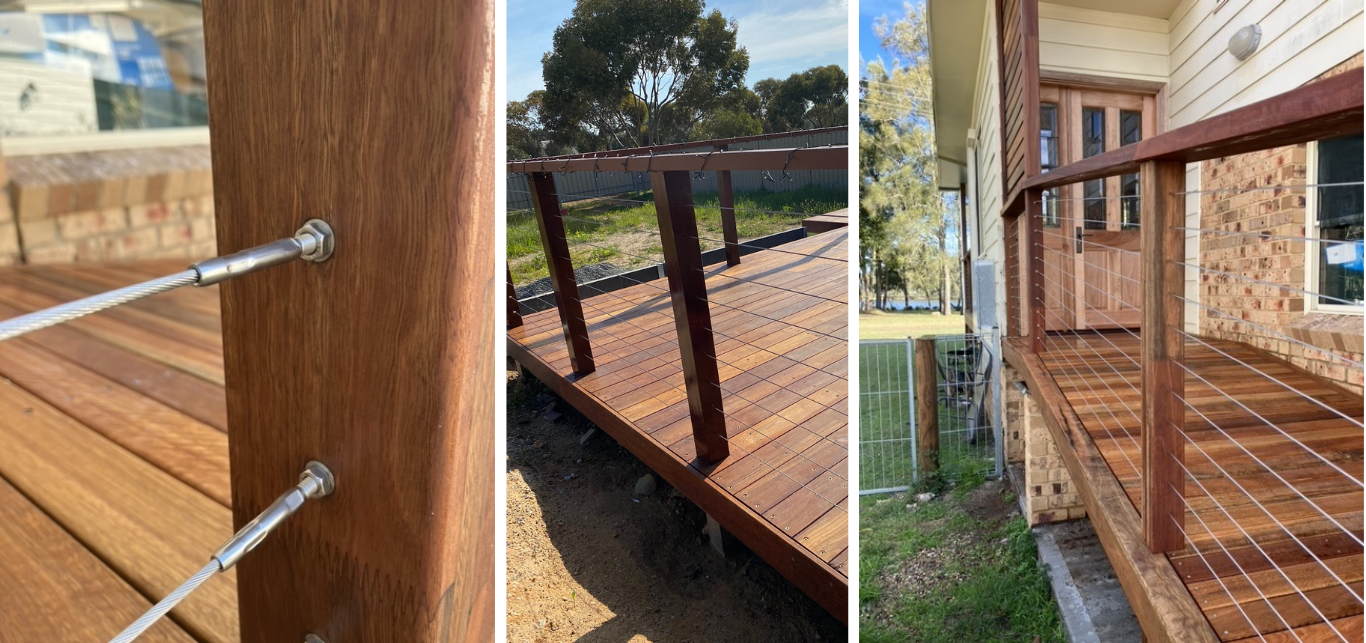Madie Wray
September 04, 2022
Everything You Need To Know About Handrail Brackets
Handrail brackets come in all sorts of different shapes, styles and colours- they’re as much a part of your stair/balustrade design as treads or rail!
Choosing the correct bracket for your setup shouldn't be difficult, but with so many options on the market, it can be a little overwhelming -especially for beginners. This is why we've broken down everything you need to know about choosing the correct handrail bracket for your staircase or balustrade.
No matter what kind of house you’re building or renovating, we’re convinced we have a handrail bracket to suit! There are some very cool colourways available - including black and brushed gold.
Being so versatile, they’re designed to be fixed so all sorts of different surfaces. Wall mounted brackets tend to be the most popular, but there are also plenty of top mounted and glass mounted varieties on the market!
Product Information
Brochures - Photos - Videos
Download our current product brochures, view our latest photos, and watch our most recent videos.
Shop Our Range Of Handrail Brackets


Learn About Handrail Brackets
- What Are Handrail Brackets Used For?
- Handrail Bracket Components
- How Far Apart Should Handrail Brackets Be?
- How Many Brackets Do I Need For My Handrail?
- How To Attach A Handrail Bracket To The Rail
- Brackets for Exterior Use
- Top Mounted Vs Wall Mounted Brackets
- Can Handrail Brackets Be Used With Grab Rail?
- Which Style Of Bracket Should I Choose?
- Conclusion
What Are Handrail Brackets Used For?
Handrail brackets are used to attach a handrail to either a wall, post or piece of glass. They distribute the weight evenly along the length of a handrail, so that it is not concentrated in any one area. This is what gives a handrail its stability and structural integrity.

Handrail Bracket Components
Handrail brackets are made up of three to four separate components (depending on the style). Sometimes these parts are supplied separately and need to be assembled onsite, other times they made be pre-assmbled or welded together.
Saddle: Either a straight or curved peice of metal that is used to attach the bracket to the handrail.
Arm: Either a straight or L shaped section of steel that connects the saddle to the wall plate.
Wall Plate: A large plate used to attach the bracket to the wall. This section cannot be removed and is necessary to the stability of the bracket.
Cover Plate: A decorative covering that hides the wall plate/exposed screws.
Related Reading
Top Staircase & Balustrade Trends for 2023Are you an interior designer or DIY enthusiast looking to get a head start on 2023's staircase and balustrade trends? If so, you've come to the right place! We've been supplying Australia's leading builders, wholesalers, designers and stair builders for more than 75 years, so it's safe to say we've seen plenty of trends come and go in our time.
How Far Apart Should Handrail Brackets Be?
We recommend 1000mm where possible to prevent the handrail bowing, however anywhere between 900mm and 1500mm is appropriate. There are no regulations surrounding how far apart handrail brackets should be spaced in Australia, so these measurements can be adjusted according to preference. It is important to note that the placement of your studs may limit your handrail bracket somewhat, as we advise against fixing brackets to plaster walls where possible. For aesthetic reasons, it is also best practice to have your first and last brackets placed no more than 200mm from the end of your handrail.

How Many Brackets Do I Need For My Handrail?
A good rule of thumb it to order 1 bracket for every metre of handrail + 1 extra. This way, all of your brackets will be within the reccomended spacing, no matter how far apart your studs are spaced.
How Far From the Wall Should My Handrail Be?
A good rule of thumb it to order 1 bracket for every metre of handrail + 1 extra. This way, all of your brackets will be within the reccomended spacing, no matter how far apart your studs are spaced.
How To Attach A Handrail Bracket to The Wall
Handrail brackets are most often secured to the wall using timber screws. Some varieties will have one large central screw, while others will have multiple, smaller screws. The latter is preferable in instances where you are unsure of the placement of your wall stud, or you are attempting to install a bracket on the edge of a stud.
If you are not attaching your bracket directly to a stud (not recommended), wall plugs can be used.

Related Reading
How To Install A Wall Mounted HandrailDid you know that more accidents happen on stairways than anywhere else in the house?
If you’ve ever lived in a home without a stair rail (or even a wobbly, uneven one), this statistic probably doesn’t surprise you. Therefore, handrails are considered an essential safety inclusion in any two story or split level home- so it’s important to install one as soon as possible. If not for the sake of yourself, then certainly for any young/elderly relatives you might live with.
How To Attach A Handrail Bracket To The Rail
Most handrail brackets include a saddle, which have small holes that allow for a screw to pass through. Timber screws should be used with wooden rail, while either self tapping screws or pop rivets can be used with stainless steel rail (depending on the wall thickness). Pop rivets are recommended on pipes where the wall thickness is less than 3mm.
If you are using a material other than stainless steel or timber, you should consult your local hardware store before purchasing fixings.
Note: When using wooden rail, you should mark and drill pilot holes to prevent the timber from splitting or splintering.
Brackets for Exterior Use
Not all handrail brackets can be used outdoors. When choosing your handrail bracket, you should always take the time to consider what material they are made from. For instance, galvanised steel and stainless steel brackets are perfect for use outside, while a zinc diecast or metal plated bracket is likely to rust.
To avoid rust or tarnish, one of the following metals should be used:
- 316 Stainless Steel
- Galvanised steel
- Aluminum
- Brass
- Copper
Top Mounted Vs Wall Mounted Brackets
A wall mounted bracket is one that attaches directly to the surface of a wall, whereas a top mounted bracket is usually mounted atop of a post or half wall. While the two serve the same purpose, and have similar attachment methods, the orientation of the cradle is different.
We do not recommend using top mounted brackets in place of wall brackets, as they are not designed to take downward force on a 90 degree angle.

Can Handrail Brackets Be Used With Grab Rail?
Yes, handrail brackets can be used with grab rails. While galvanised disability fittings should be used for physiotherapy, or dance setups (where excessive sideways force might be applied), handrail and handrail brackets can be used to aid day to day movement.
For instance, you may wish to set up a grab rail beside a bed or along a hallway. Handrail brackets are perfectly suitable for this application.
Which Style Of Bracket Should I Choose?
Before choosing your handrail bracket, you should first consider which style handrail you would like to use. A handrail with a flat bottom will need a flat saddle, while a handrail with a round bottom will need a curved saddle.
The overall width of your handrail will also determine which handrail bracket you should use (as minimum 50mm clearance is required between the wall and start of the rail). This would mean, for instance, a 50mm handrail would require at least a 75mm bracket.
Conclusion
When it comes to choosing handrail brackets, your personal preference and taste plays a major role in which style you should choose. However, as you can see, there are many other factors that should be considered. Namely, you should be considering:
- Handrail configuration;
- Distance from the wall;
- Size of your staircase/stairwell; and
- Location of the handrail (internal/external).
If you have any questions regarding the handrail brakets we stock, or need any additional advice, please get in contact with us via either email or phone!
People Also Read

How to install different kinds of post caps
A post capital, also known as a post cap or finial, is a decorative and protective ‘cap’ that is installed on top of a fence or stair post to help protect it from the elements (by covering the exposed end grain of timber posts, or open end of metal posts). Traditionally they were manufactured from timber, but are now also available in a range of different metal finishes such as aluminium and stainless steel.

How To Install or Replace Roof Finials and Gable Spires
You might be surprised to learn that there are no hard and fast rules when it comes to installing roof finials and gable spires. Almost every installation will vary slightly from each other depending on the style and age of the house it is being installed on. With that being said, installing roof finials does not generally require any specialty tools or equipment, just standard timber screws or nails.

Wire Balustrade Pricing Guide: Average Costs for Decks, Stairs, and Platforms
When it comes to domestic decks, staircases, and balconies, wire balustrades have become a popular choice in the world of architectural and interior design. Also known as stainless steel balustrading, this system offers a contemporary and minimalist alternative to traditional glass and timber options, often at a more cost-effective price point.
